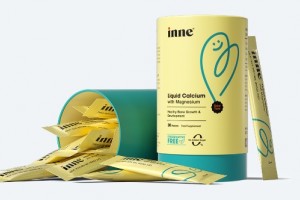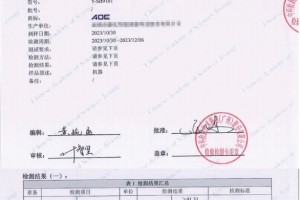原标题:小学英语1-6年级要点知识点最全汇总,不看亏大啦!
小学阶段必备的根底英语语法知识点,时态,句型,常用词大全,你需求的都在这儿了
主张咱们咱们多读几遍,把这些深深记在脑子里哦!
日期的表明法
用the+序数词+of+月
如:三月三日thethirdofMarch;
12月25日the25thofDecember.
both表明两者都
如:Myparentsarebothteachers.
all表明三者以上都
如:Thestudentsareallveryexcited.
节日的表明法
有day的节日前用on.
没有day的节日前用at,
如:atChristmas;onChristmasDay;atNewYear;onNewYear’sDay.
激动振奋的
excited表明激动的,振奋地主语是人;
exciting表明令人激动的,令人振奋的主语是工作
如:Therunningraceisveryexciting,soallthestudentsareveryexcited.
赛跑十分令人激动,因而一切的学生都很激动。
比较
两者比较用比较级,三者以上比较用第一流
如:Whorunsfaster,theboyorthegirl?Theboydoes
谁跑得更快,男孩仍是女孩?男孩。
Whichseasondoyoulikebest?Ilikeautumnbest.
你最喜爱哪个时节?我最喜爱秋天。
Whichseasondoyoulikebetter,summerorwinter?Ilikewinterbetter.
你更喜爱哪个时节,夏天仍是冬季?我更喜爱冬季。
动词复原的用法
前面用了do,doesdid,don’t,doesn’tdidn’t后边动词要复原。
如:DidshewatchTVlastnight?
Helendoesn’tliketakingphotos.
到了
抵达用getto
但留意到家,到这儿,到那儿不行以加to
如:gethome;gethere;getthere,
别的gohome;comehere;gothere也相同。
长着和穿戴
长着什么用with
如:thegirlwithbigeyes大眼睛的女孩;
穿戴什么用in
如:themaninblack穿黑衣服的男人
或:thewomaninthewhiteskirt穿白色短裙的妇女
让或人做某事
用letsb后加动词原形
如:Let’swatertheflowerstogether.
是该做…的时分了用It’stimefor+名词或It’stimeto+动原。
协助或人做某事是helpsbwithsth
如:帮我学英语是helpmewithmyEnglish
树上
外来的东西在树上用inthetree
如:thebirdinthetree;
树上长的用onthetree
如:theapplesonthetree
运动和乐器
球类之前不加the;
乐器之前有必要加the
如:playthepiano;playfootball
现在进行时
表明正在发作的工作或进行的动作,常与now,listen,look等词连用,结构是主语+be动词(am,is,are)+动词ing.
如:Itisrainingnow.
外面正在下雨
Itissixo’clocknow.
现在6点了
Myparentsarereadingnewspapersinthesittingroom.
我爸爸妈妈正在客厅看报纸
Look!Thechildrenarehavingarunningracenow.
看!孩子们正在赛跑
问句将be动词移前,否定句在be动词后+not.
一般现在时
表明常常重复发作的工作或动作,常与often,usually,sometimes,always,everyday(weekyear…)onSundays等词连用。
结构是主语+动词原形;当主语为第三人称奇数即he,she,it,Tom,mymother,theboy等词时,动词后加s或es.
如:WehaveanEnglishlessoneveryday.
咱们每天都要上英语课
Dotheboysrunfasterthanthegirls?Yes,theydo.
男孩比女孩跑的快吗?是的
问句借助于do,does否定句借助于don’t,doesn’t,后边动词必定要复原。
一般曩昔时
表明发作在曩昔的工作或存在的状况,常与justnow;amomentago;…ago;yesterday;last(week;month;year;Monday;weekend);thismorning等词连用。
结构是主语+be动词的曩昔式(was;were)或主语+动词的曩昔式。
留意:be动词与动词曩昔式不行一起运用。
如:Myearphoneswereonthegroundjustnow.
我的耳机刚刚还在呢。
Wherewereyoulastweek?Iwasatacamp.
你上个星期去哪了?我去野营了
Whatdidyoudoyesterday?Ivisitedafarm
你昨日去干嘛了?我去观赏农场了。
问句有be动词将be动词移前,没有be动词借助于did,后边动词复原;
否定句有be动词在后边加not,没有借助于didn't后边动词复原。
一般将来时
表明即将计划发作的工作或动作,常与tomorrow,nextweek(year;Tuesday…),thisweek(weekend;evening;afternoon;…)today等词连用。结构是主语+be(am,is,are)goingto+动原或主语+will+动原。
如:Whatareyougoingtodotomorrow?Iamgoingtohaveapicnic.
你明日要去干嘛?我要去野餐。
Thechildrearegoingtohaveasportsmeetingnextweek.
孩子们下个星期将参与运动会。
Tomwill/isgoingtoseeaplaywithhisfatherthisevening.
Tom今晚将和爸爸妈妈去看表演。
问句将be动词或will移前;否定句在be动词或will后加not.
神态动词
can;can’t;should;shouldn’t;must;may后必定加动词原形。
如:Thegirlcan’tswim,butshecanskate.
女孩不会游水,可是会滑冰
Don’ttalkinclass,youshouldlistentotheteachercarefully.
不要再课上说话,你应该仔细听教师讲。
祈使句
必定祈使句以动词原形最初;否定祈使句以don’t加动词原形最初。
如:Opentheboxforme,please.
请为我翻开盒子。
LiuTao!Pleasegetupearliertomorrow.
刘涛,明日请早点起床!
Don’twalkonthegrass!
不要在草地上走!
Helen!Don’tclimbthetree,please.
海伦!不要爬树。
go的用法
去干嘛用go+动词ing
如:goswimming;gofishing;
goskating;
gocamping;
gorunning;
goskiing;
gorowing…
比较
than前用比较级;as…as之间用原级。
如:Mymotheristwoyearsyoungerthanmyfather.
我妈比我爸年青两岁。
LiuTaojumpsasfarasBen.
刘涛跳得和本相同远。
喜爱做某事
用like+动词ing或like+to+动原。
如:SuYanglikesgrowingflowers.
苏阳喜爱莳花。
ThechildrenliketoplaywithlanternsatSpringFestival.
孩子们喜爱在新年去玩花灯。
想要做某事
用wouldlike+to+动原或want+to+动原。
例:I’dliketovisittheHistoryMuseum.=IwanttovisittheHistoryMuseum
some
用于必定句中,在否定句和问句中改为any,但当表明含蓄口气时仍用
如:CanIhavesomewritingpaper?Wouldyoulikesomeorangejuice?
代词
人称代词主格做主语用一般放在句首或动词前,主格分别是Iyouhesheitweyouthey。
宾格做宾语用,一般放在动词或介词后
如:Openthemforme.Letus…,joinme等。
宾格分别是meyouhimheritusyouthem。
描述词性物主代词放在名词前,不能独自运用,分别是myyourhisheritsouryourtheir
名词性物主代词相当于形物加名词,它只能独自运用后边欠好加名词,分别是mineyourshishersitsoursyourstheirs。
介词
介词后要么不加动词,加动词只能加动词ing方式
如:begoodatrunning;
dowellinjumping;
时刻介词
时节前,月份前用介词in
如:insummer;inMarch
详细的哪一天如星期几,几月几日用介词on
如:onSaturday;onthesecondofApril;onWednesdaymorning
在几点钟前用介词at
如:ataquartertofour;
只在上下午晚上用in
如:inthemorning/afternoon/evening;
但在夜间用atnight。
另:时节,月份和星期前欠好加the.
名词复数构成的办法
有规矩的有:
(1)直接在名词后加s
如orange—oranges;photo—photos;
(2)以x,s,sh,ch结束的加es
如:box—boxes;glass—glasses;waitress—waitresses;watch—watches;peach--peaches
(3)以子音字母加y结束的改y为i加es
如:study—studies;library—libraries;hobby—hobbies;family—families;
(4)以f,fe结束的改f,fe为v+es如:knife—knives;thief—thieves(注:以o结束的咱们学过的只要mango加es,mango—mangoes其他加s,)
不规矩的有:
man—men;woman—women;people—people;child—children
动词第三人称奇数的构成
(1)直接在动词后加s
如:run—runs;dance—dances
(2)以s,sh,ch,o结束的加es
如:do—does;go—goes;wash—washes;catch—catches
(3)以子音字母加y结束的改y为i加es
如:study—studies;carry—carries;
现在分词的构成
(1)直接在动词后加ing
如:sing—singing;ski—skiing;
(2)双写词尾加ing
如:swim—swimming;jog—jogging;run—running;
(3)以不发音的e结束的去e加ing
如:ride—riding;dance—dancing;make—making;
规矩动词曩昔式的构成
(1)直接在动词后加ed
如:clean—cleaned;milk—milked;play—played;
(2)以e结束的直接加d
如:dance—danced;taste—tasted;
(3)以子音字母加y结束的改y为i加ed
如:study—studied;carry—carried;
(4)双写词尾加ed
如:stop—stopped;jog—jogged;
不规矩的有:am,is—was;are—were;do,does—did;have,has—had;go—went;meet—met;sit—sat;see—saw;get—got;tell—told;run—ran;come—came;steal—stole;read—read;
描述词副词比较级的构成
规矩的:
(1)直接在描述词或副词后加er
如;small—smaller;low—lower;
(2)以e结束的加r
如:late—larer;
(3)双写词尾加er
如:big—bigger;thin—thinner;fat—fatter;
(4)以子音字母加y结束的改y为i加er
如:heavy—heavier;early—earlier;
不规矩的有:
good,well—better(第一流为best);many,much---more(第一流为most);far---farther;
rain与snow的用法
(1)作为名词意思是雨水和雪是不行数名词
如:Thereisalotofrainthereinspring.那儿的春天有许多雨水。
(2)作为动词意思是下雨和下雪,有四种方式分别是:
动词原形rain,snow;
第三人称奇数rains,snows;
现在分词raining;snowing
曩昔式rained;snowed;
如:①Look!Itisrainingnow.瞧!天正在下雨。
②ItoftenrainsinNantonginsummer.南通夏天常常下雨。
③Itrainedyesterday.昨日下了雨。
④Itisgoingtoraintomorrow.明日要下雨。
(3)描述词为rainy和snowy意思是有雨的和有雪的
如:Itisoftenrainyhereinspring.这儿的春天常常是有雨的。
Ifitisrainytomorrow,I’llstayathome.假如明日是有雨的,我将呆在家里。
比较级
留意只要同类事物才可进行比较。
如:Myeyesarebiggerthanhers.Yourschoolbagisheavierthanmine.MycomputerisnicerthanNancy’s.Mybrotherisstrongerthanme.
have,has
表明或人有(has用于第三人称奇数);Thereis/are;
Therewas/were表明某地存在有
留意Therebe句型的就近准则
奇数或不行数用thereis/was;
复数用thereare/were.
自身便是复数的词
眼镜glasses;耳机earphones;鞋shoes;裤子trousers等词自身是复数。
如:Myglasseswereonthechairjustnow.
但假如表明这双,这副,一双的时分用奇数
如:Thereisapairofchopsticksontheplate.Thispairofearphonesisforyou.
五个元音字母分别是Aa,Ee,Ii,Oo,Uu;
一个的用法
a用于子音前不是子音字母前;an用于元音前不是元音字母前。
如:Thereisan’s’,a‘t’,a‘u’,a‘d’,an‘e’,an‘n’,anda‘t’intheword‘student’.
时刻表明法
有两种:
(1)直接读时钟和分钟。
如6:10读成sixten;7:30读成seventhirty;8:45读成eightforty-five;
(2)用to与past表明。
在半小时包含半小时以内用几分past几点
如:6:10读成tenpastsix;7:30读成halfpastseven;
过了半小时用下一个钟点差几分
如7:45读成aquartertoeight;9:50读成tentoten;
基数词变序数词的办法
基变序有规则,结束加上th;一二三特别例,结束字母t、d(即first,second,third);
八去t,九去e,ve要用f替(即eigh—eighth;nine—ninth;five--fifth;twelve—twelfth);
ty改y为ie后加th别忘记(即整十数如twenty—twentieth;forty—fortieth);
几十几十位为基个位为序(如第二十一为twenty-first)。
别的着重序数词前必定要加the。
责任编辑:








